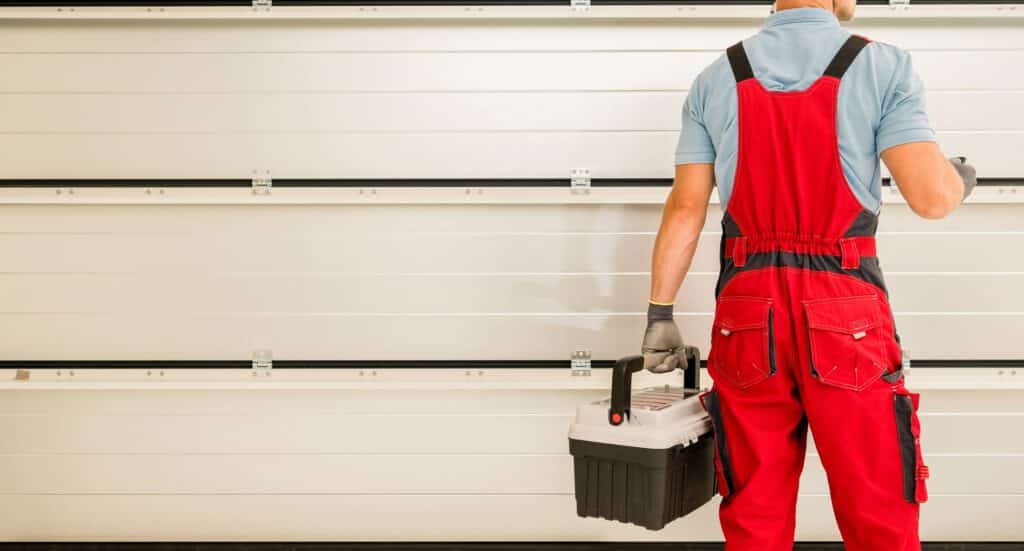As the go-to experts for garage door and gate services in Tarrant County, we’re committed to providing homeowners with the knowledge and resources necessary to maintain their garage door systems in peak condition. In this in-depth guide, we’ll focus on a critical component of any garage door system: the springs. More specifically, we’ll explore how to identify, prevent, and address broken spring issues in your garage door, ensuring safe and reliable operation.
The garage door springs play a crucial role in supporting and counterbalancing the weight of the door. As a result, they endure significant stress throughout their lifecycle. Both torsion and extension springs can break or wear out over time, compromising the performance and safety of your garage door. Ignoring these issues can lead to more severe problems, such as damage to the garage door opener or even personal injury.
Being well-informed about the signs of broken springs, implementing preventive measures, and understanding the repair process will equip you to deal with these challenges effectively. It’s essential to remember that repairing or replacing broken garage door springs can be hazardous if not executed correctly. With this guide, we aim to educate you about every facet of broken spring repair for your garage door, reinforcing the importance of prompt action, and empowering you to make informed decisions regarding the upkeep of your garage door system.
Comprehensive Guide to Broken Spring Repair for Garage Doors: Identifying, Preventing, and Fixing Issues
Recognizing the Signs of Broken Garage Door Springs
It’s vital to be aware of the indicators that may point to broken garage door springs. Keep an eye out for these telltale signs:
1. Unusual noises: Loud snapping or banging noises when operating the garage door could signify a broken spring.
2. Uneven door movement: A garage door that appears crooked or doesn’t open evenly could indicate a broken spring, especially concerning extension springs.
3. Failure to open: A garage door that only opens a few inches or refuses to open at all may have a broken torsion spring.
4. Visible wear or damage: Upon inspection, you may notice a visible gap in the torsion spring or signs of fraying on extension springs.
Implementing Preventive Measures
Regular maintenance and thoughtful actions can prolong the life of your garage door springs and minimize the risk of breakage. Consider the following preventive measures:
1. Keep springs lubricated: Periodically applying a light coat of garage door lubricant can reduce friction and maintain optimal performance.
2. Balance your garage door: Regularly check the balance of your garage door to ensure smooth operation and reduce stress on the springs.
3. Inspect for wear and tear: Regularly inspect the condition of your springs, looking for signs of rust, fraying, or gaps.
4. Open and close the garage door carefully: Avoid forcefully operating the garage door, as this can cause unnecessary strain on the springs.
Understanding and Executing the Broken Spring Repair Process
Tackling broken spring repair may seem daunting; however, a clear understanding of the process and safe execution can help ensure success. Broken spring repair typically involves the following steps:
1. Disconnect the opener: Before starting the repair, disconnect the garage door opener to prevent it from engaging during the process.
2. Gather the necessary tools: Tools commonly used in broken spring repair include winding bars, wrenches, sockets, and a ladder.
3. Secure the garage door: Use a clamp or locking pliers to secure the garage door in place, preventing it from falling during the repair.
4. Replace the springs: Depending on whether you have torsion or extension springs, the process will vary. For torsion springs, you’ll need to unwind the old spring, replace it with a new one, and then wind the new spring using winding bars. For extension springs, you’ll need to release the tension from the springs, remove the old springs, and install new ones.
5. Test the door: After completing the repair, test the garage door to ensure it operates smoothly and safely.
Safety Tips and Precautions
Repairing broken garage door springs can be hazardous if not carried out carefully, so it’s crucial to follow safety tips and precautions:
1. Use the right tools: Using appropriate tools for garage door spring repair, like winding bars, can reduce the risk of injury.
2. Wear protective gear: Wearing safety glasses and gloves during the repair process can protect you from any debris or sharp edges.
3. Work with a partner: If you’re not experienced in garage door repair, it’s advisable to have a partner who can assist with the process and ensure safety.
4. Seek professional help: If you’re uncertain about handling broken spring repair on your own, reach out to a professional who can execute the repair safely and correctly.
Conclusion
Understanding the essentials of garage door broken spring repair can help prevent costly damage and unwarranted safety risks. By identifying the signs of broken springs, taking preventive measures, and navigating the repair process, you’ll be better equipped to maintain your garage door system for years to come. Keep in mind that garage door spring repair can be a dangerous task, so don’t hesitate to seek professional help if you believe the task is beyond your skillset. Our team of experts in Fort Worth stands ready to assist with all your garage door-related needs, ensuring the safety, performance, and longevity of your garage door system.

